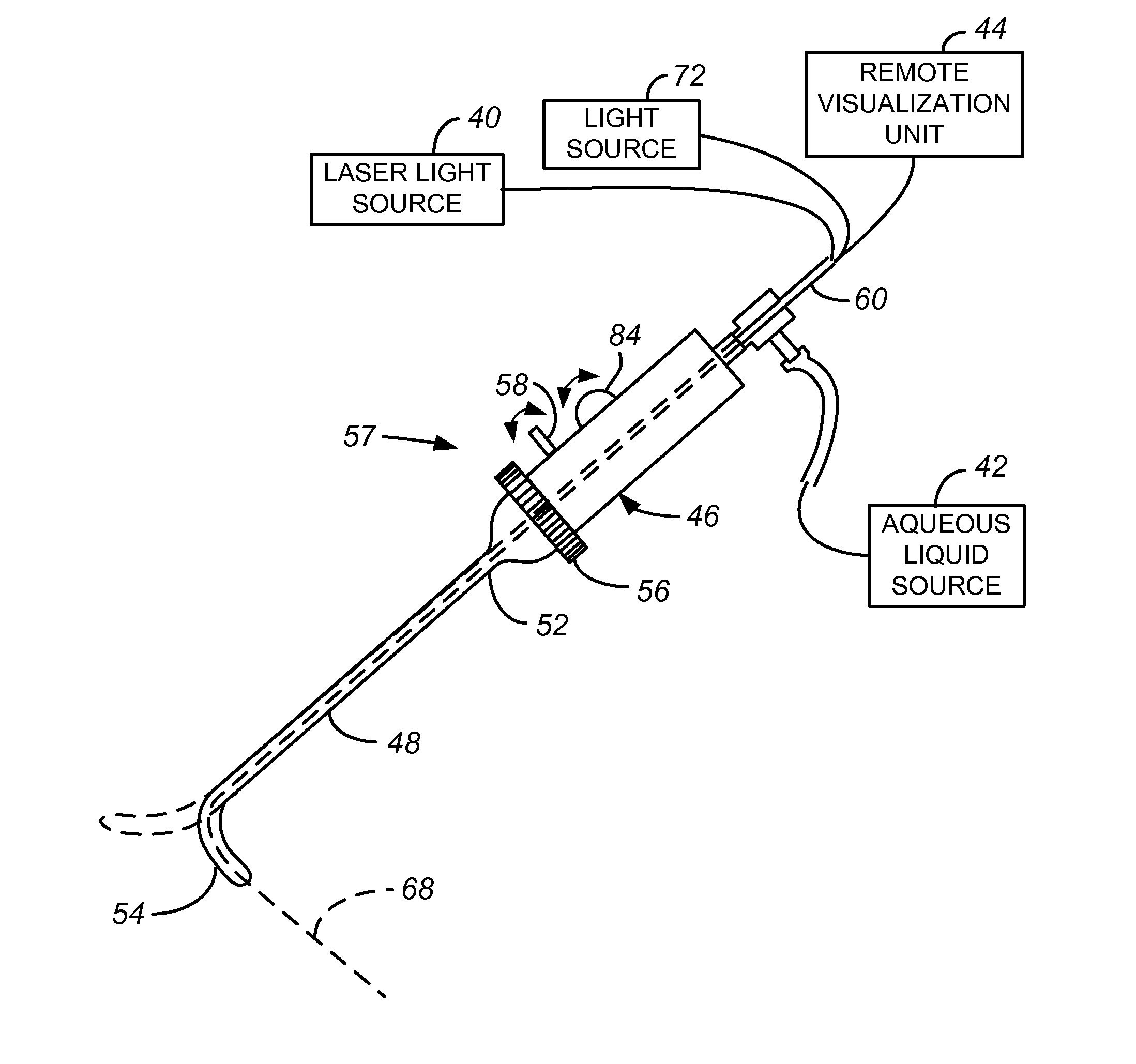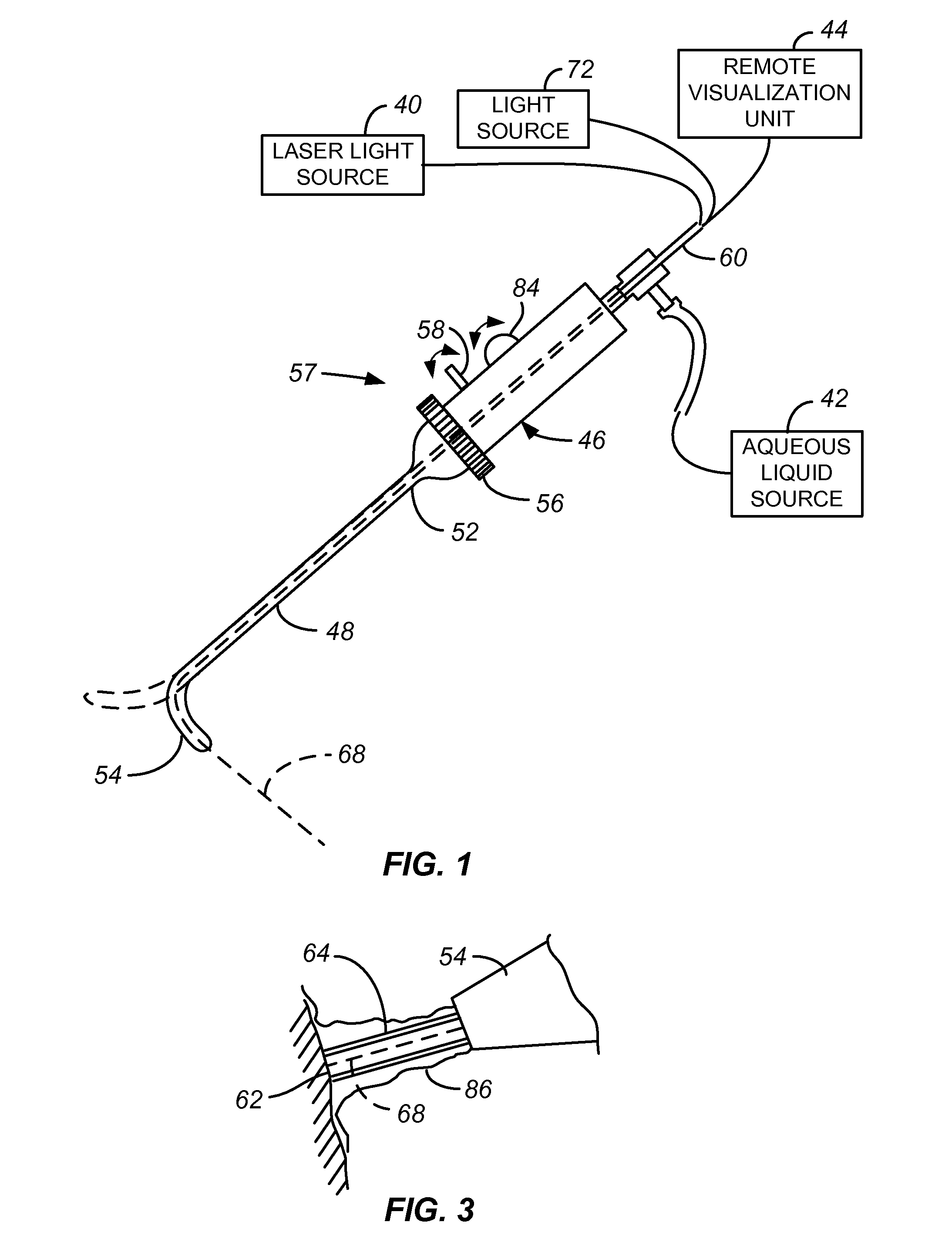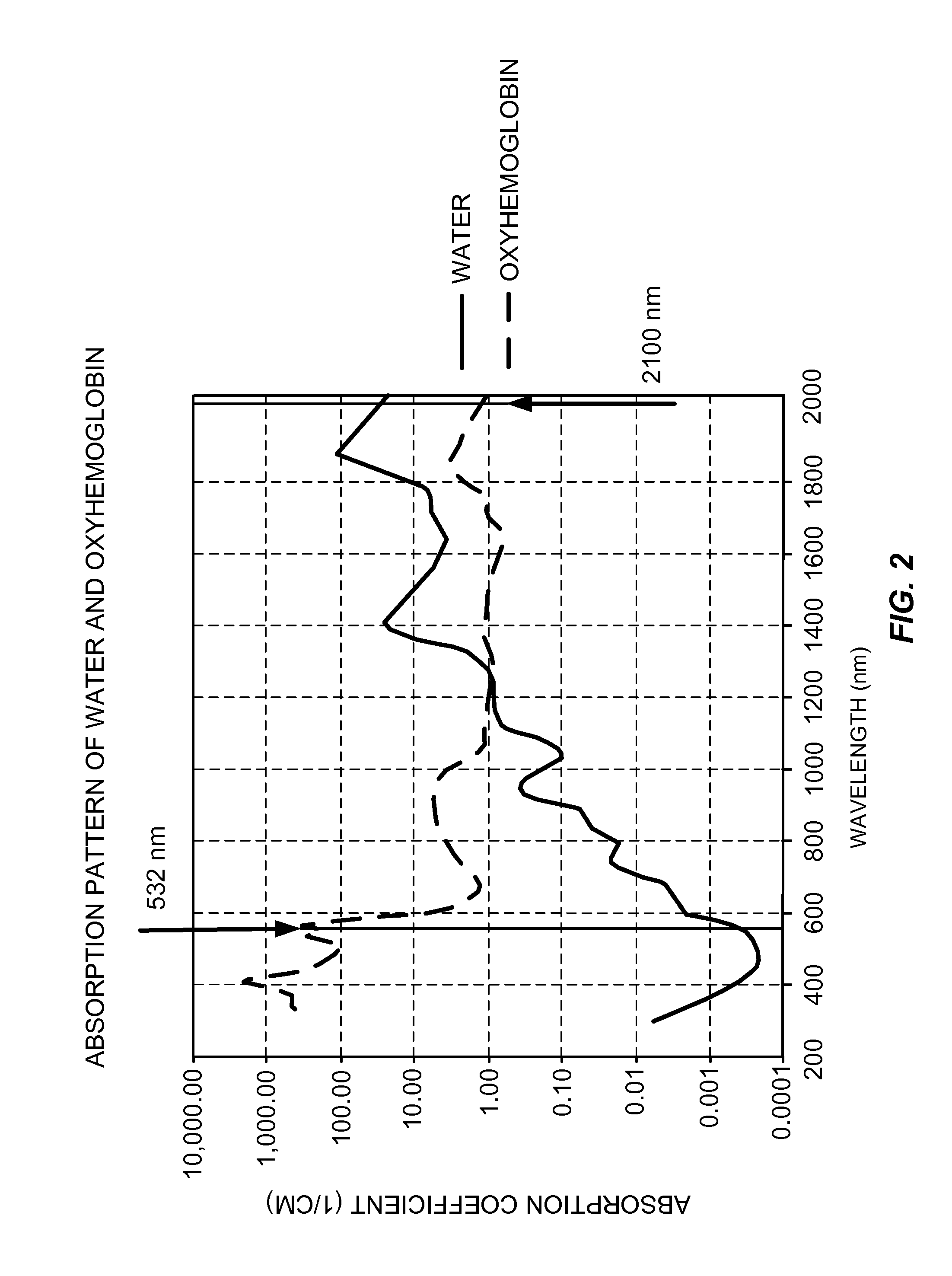Laparoscopic Laser Device and Method
a laser device and laser technology, applied in the field of tissue laser treatment, can solve the problems of affecting the actual vaporization of tissue, affecting the physician's ability to see what is actually happening at the target tissue, and interfere with the radiation being applied to the target tissue, so as to reduce the amount of laser light energy absorbed by the irrigating liquid, reduce and achieve the effect of reducing the heating of the irrigating liquid
- Summary
- Abstract
- Description
- Claims
- Application Information
AI Technical Summary
Benefits of technology
Problems solved by technology
Method used
Image
Examples
Embodiment Construction
[0031]The following description of the invention will typically be with reference to specific structural embodiments and methods. It is to be understood that there is no intention to limit the invention to the specifically disclosed embodiments and methods but that the invention may be practiced using other features, elements, methods and embodiments.
[0032]FIG. 1 illustrates a laparoscopic laser system including a laparoscopic laser device 38 coupled to a laser light source 40, also called a laser energy source 40, an aqueous liquid source 42 and a remote visualization unit 44. The laser energy source is chosen so that the laser energy is only minimally absorbed by the irrigating liquid used, typically an aqueous liquid. FIG. 2 is a graph illustrating the absorption pattern of water and oxyhemoglobin. The absorption coefficient of water for laser wavelengths of 400-600 nm is extremely low, with the absorption coefficient of lasers having a wavelength of 532 nm being plotted on the g...
PUM
 Login to View More
Login to View More Abstract
Description
Claims
Application Information
 Login to View More
Login to View More - R&D
- Intellectual Property
- Life Sciences
- Materials
- Tech Scout
- Unparalleled Data Quality
- Higher Quality Content
- 60% Fewer Hallucinations
Browse by: Latest US Patents, China's latest patents, Technical Efficacy Thesaurus, Application Domain, Technology Topic, Popular Technical Reports.
© 2025 PatSnap. All rights reserved.Legal|Privacy policy|Modern Slavery Act Transparency Statement|Sitemap|About US| Contact US: help@patsnap.com



